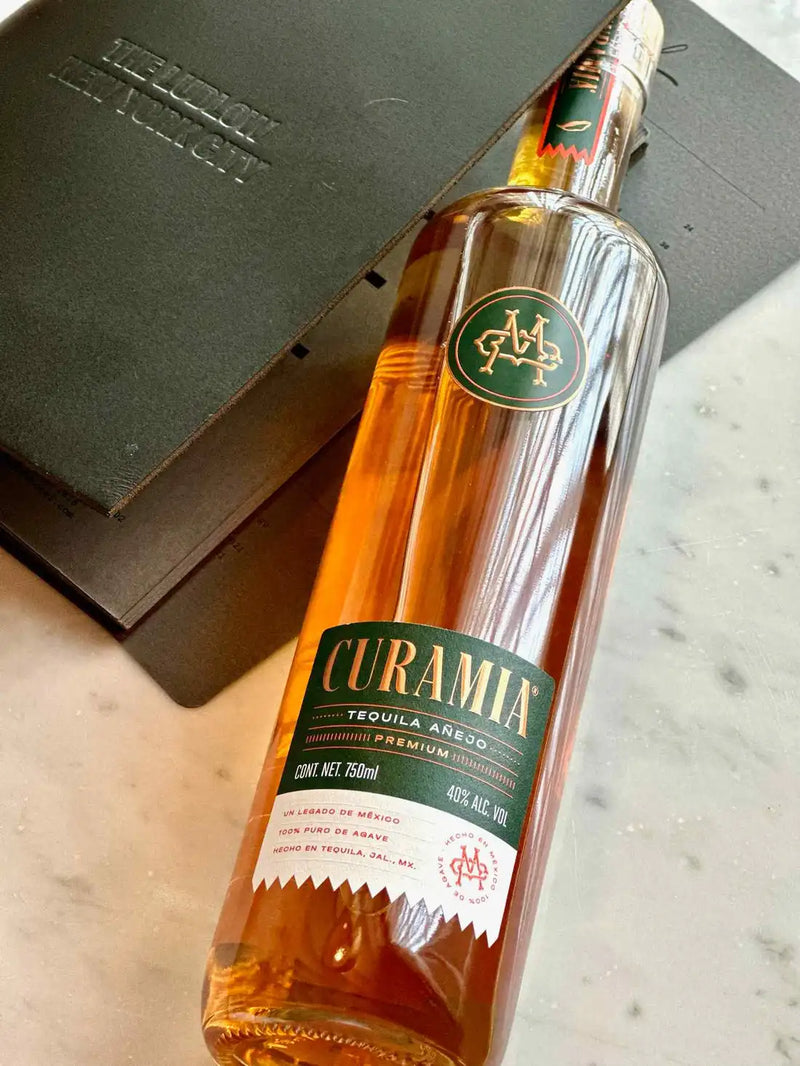When someone says “tequila,” what comes to mind first? You probably think of the clear, strong stuff with a salted rim—tequila blanco. But what about the añejo flavor with a golden amber hue? Though it’s perhaps less popular with college spring breakers, añejo tequila certainly has a spot at the grown-ups’ table. It may even replace whiskey’s place in the conversation. In fact, in 2022, sales of añejo tequila increased 122% in the U.S. market.
So, what is añejo tequila, anyway? Well, in layperson’s terms, it’s tequila blanco’s richer older sibling. Let us explain.
What is Añejo Tequila?
Añejo is tequila aged between one and three years in wooden barrels. Also known as extra-aged tequila, it has a dark amber color, smooth taste, and rich, complex flavor.
Translated from Spanish, añejo means “aged” or “vintage.” Other types of tequila are aged similarly, though each expression is aged for a different period of time. The longer the tequila is aged, the darker the hue and richer the flavor profile becomes.
What is the Añejo flavor profile?
Añejo tequila has notes of vanilla, caramel, cinnamon, tobacco, baking spices, honey, chocolate, or dried fruit. The smooth yet complex añejo flavor comes from the aging process, specifically the oak barrels. These barrels can be made from various kinds of wood, such as American, French, and white oak. Each gives the tequila a slightly different flavor profile.
Richer than tequila blanco and reposado, it’s typically sipped neat or on the rocks, but it is also suitable for replacing whiskey in cocktails. The añejo flavor plays well with chocolate or dried fruit notes in a cocktail and pairs well with queso, honey-glazed meats, or spicy foods on the menu.
What color is Añejo Tequila?
You may be wondering how tequila can vary so much in appearance. If traditional tequila blanco is clear, what color is añejo tequila?
Añejo tequila has a warm amber hue. Its golden appearance is similar to apple juice or whiskey, and it comes from contact with the oak barrels during the aging process. Or, it’s filled with additives to manufacture an authentic appearance. (But we don’t do that around here.)
How is Añejo Tequila made?
If the color isn’t added superficially, how is añejo tequila made with an authentic appearance?
Añejo tequila begins its journey as tequila blanco. It is then aged in wooden barrels (typically oak) for at least one year but can be aged up to three years. During the aging process, the tequila will take on the aroma and flavor profile of the wood it’s matured in. Therefore, the older it is, the darker the hue and the more complex the añejo flavor becomes.
If the añejo is aged for less than one year, it’s considered a reposado. If the añejo is aged over three years, it is classified as an Extra Añejo.
Curamia’s Tequila Añejo
Our Tequila Añejo is rich and opulent with robust notes of tobacco and vanilla. A sophisticated profile of spiced orange marmalade, roasted almonds and hazelnuts, cooked agave, and caramel highlights its depth and complexity. Our añejo flavor is accented by a sweet aroma of vanilla bean. Aged for twenty-four months in new and used American oak barrels, it has a deep amber color with warm golden hues and zero additives.
Añejo Tequila FAQs
What is the difference between Reposado and Añejo tequila?
If reposado is also aged tequila, what is añejo tequila, and how do the two differ?
Reposado is tequila aged between two and twelve months, whereas añejo tequila is aged between twelve months (one year) up to three years. Both are aged in wooden barrels, though añejo is aged longer.
Because of the aging process, both tequilas turn a golden color; however, añejo tequila takes on a deeper amber hue, while reposado is more pale yellow. The longer the tequila ages, the deeper the color.
Also affected by the aging process is the flavor profile. Reposado is lighter, more citrus-forward, and keeps much of the tequila blanco flavor. Añejo flavor is richer, with a smokier taste. Both have vanilla, oak, and spice notes, though you’ll get a more robust, complex flavor with an añejo.
What is better Reposado or Añejo?
This depends on your personal taste. If you enjoy a softer tequila, you may choose a reposado. If you like a strong, complex tequila, añejo tequila is the way to go. If you’ve run out of whiskey for your favorite cocktail, añejo is also a good substitute.
Both are enjoyed sipped neat or in cocktails; however, Reposado is best used in citrus-forward drinks, while añejo shines with a deeper, richer mixer.
Is Añejo tequila better than silver?
Añejo tequila is deeper, more complex, and richer than silver tequila. Because of the special attention it’s given during the aging process, it tends to be more expensive; therefore, it’s commonly seen as more valuable. Because of the flavor profile, it’s also often compared to (and even substituted for) whiskey.
However, silver tequila is considered the most “pure” and is best for traditional tequila cocktails like the classic margarita. Each tequila expression has a time and place, and you may enjoy tequila blanco more!
The next time you host family and friends, switch up your Old Fashioned recipe with a taste of añejo instead of whiskey. Your guests may not notice the difference, or they’ll be asking you what you did differently to enhance the classic flavor. And when they inevitably ask, “What is añejo tequila?” you’ll be fully equipped to answer without Google’s help!
So, go on! Surprise and delight your dinner party with the smooth, rich complexity of fully-bodied añejo. Pick up a bottle of aged Curamia Tequila Añejo in stores near you, or ship a bottle straight to your doorstep.



